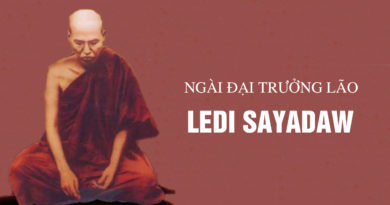PROMOTING BUDDHISM IN EUROPE – PART I: HISTORICAL OVERVIEW
PROMOTING BUDDHISM IN EUROPE – HISTORICAL OVERVIEW
I divide the history of the Western engagement with Buddhism into three major phases. These phases are not totally discrete, for they intersect and overlap, but the threefold division provides a useful way of determining general trends.
Phase I: The Discovery of Buddhism
Phase I consisted in the academic study of Buddhist texts, aimed at discerning the broad contours of Buddhist history and doctrine. This project took place during the peak of the colonial period, when European countries were busy subjugating Asian peoples and incorporating their nations into their hungry empires. In many cases European interest in Buddhism was bound up with the Christian missionary enterprise of converting the native populations to Christianity.
Although reports about Asian Buddhist beliefs and practices had been drifting back to Europe since the thirteenth century, a clear picture of Buddhism as a unitary whole did not take shape in Europe until the middle of the nineteenth century, just a little more than 150 years ago. Before then, the sundry reports that had reached scholars in Europe were generally haphazard, inaccurate, and conjectural, if not utterly fantastic. The first person to comprehend Buddhism as a unitary tradition and establish its historical origins was the brilliant French philologist Eugene Burnouf. Burnouf had studied Pali, Sanskrit, and Tibetan manuscripts that had been sent to him in Paris from the East. Based on these texts, with barely no other clues, he wrote his 600-page tome, Introduction to the History of Indian Buddhism (1844), in which he traced in detail Indian Buddhist history and surveyed its doctrines and texts. Though later generations of scholars have greatly expanded upon Burnouf’s work and filled in many missing pieces, they regard as essentially accurate the outline of Indian Buddhism he proposed in his groundbreaking study.
In the decades following Burnouf, there appeared throughout Europe a galaxy of brilliant scholars who opened up the treasures locked away in all the different branches of Buddhism. These scholars fall into three main schools. The scholars of the “Anglo-Germanic School” focused on the Pali tradition. Their work emanated from the Pali Text Society, founded by T.W. Rhys Davids, and their ranks included Caroline Rhys Davids, Oldenberg, Woodward, Hare, and Horner; the Danish scholars Trenckner, Fausboll, and Anderson; and the Swede Helmer Smith. The “Franco-Belgian School” investigated Indian Buddhism both Hinayana and Mahayana in Sanskrit, Tibetan, and Chinese texts; its luminaries were de la Valle Poussin, Sylvain Levy, and Lamotte. The “Russian School” — represented by Stcherbatsky, Rosenberg, and Obermiller — concentrated on scholastic Indian Buddhism as preserved especially in Tibetan texts. Although these scholars usually remained reticent about their own religious beliefs, by collecting Asian manuscripts, publishing modern editions of these texts, and providing translations and scholarly studies of Buddhist thought, they laid the indispensable foundation stone for the spread of the Dhamma in the West, namely, access to the original Buddhist sources.
The academic study of Buddhism initiated by these pioneers has continued through to the present time, despite the setback of two world wars and frequent shortages in funding. In Western universities and institutes, scholars map in ever finer details and with broader sweep the entire Buddhist heritage — from Sri Lanka to Mongolia, from Gandhara to Japan. Thus what I call “Phase I” in the history of Western Buddhism is not so much a temporary stage superceded by its successors as a preparation for the further evolution of Buddhism in its Western setting.
Phase II: Elite Appropriation
Phase II in the European encounter with Buddhism I shall call “elite appropriation.” By this, I mean the adoption of Buddhism as a living creed by an increasing number of intellectuals, writers, artists, and professionals. In the German-speaking world the catalyst for the transition from the mere academic investigation of Buddhism to its active appropriation was the philosopher Arthur Schopenhauer. Schopenhauer published the first edition of his philosophical masterpiece, The World as Will and Representation, in 1819, before he had come across reliable accounts of Buddhist thought. However, his philosophical intuitions showed such striking parallels to the Dhamma that several decades later, when Schopenhauer did gain access to accurate material on Buddhism, he at once recognized the affinity of his own thought to the Buddha’s doctrine. Thus, in the second edition of his book, he hailed Buddhism as “the most perfect” of all the world’s religions. Such was his admiration for the Buddha that he kept a small statue of the Master on his mantle alongside a bust of his philosophical hero, Immanuel Kant.
Schopenhauer did not become a Buddhist himself, which would have been almost unthinkable in the Europe of his day, but his writings had a profound impact on later European thinkers and guided many to the Dhamma. At least three major figures owed their discovery of Buddhism to Schopenhauer’s influence: the Austrian Indologist K.E. Neumann, who translated the Digha and Majjhima Nikayas and other Pali texts into German; the Bavarian judge George Grimm; and the Berlin homeopath Paul Dahlke. The last named pair, through their writings and promotional work, became the two leading proponents of Buddhism in Germany during the early part of the twentieth century. Their writings did not simply analyse Buddhism in terms of objective, impersonal categories, but tried to explain it from the inside, as experienced by one who had made the personal leap of faith.
Arnold and the Theosophists
In the English-speaking world, the primary impetus for the adoption of Buddhism by educated Westerners came from Sir Edwin Arnold’s inspirational poem on the Buddha’s life, The Light of Asia. Arnold depicted the Buddha as a figure of heroic stature whose personality combined deep compassion for all humanity with a masterly capacity for rational thought. These two characteristics dovetailed perfectly with the intellectual milieu of the period and aroused in Arnold’s readers a new respect for the Buddha and interest in his teachings. Though conservative Christians were indignant at the poem’s success, the British intelligentsia of the period were liberal enough not to feel constrained by Christianity’s claims to sole possession of the truth. The Theosophical movement, founded by Madame Blavatsky and Henry Steele Olcott, also gave Buddhism a profile in the Anglo-American world. While their interpretation of Buddhism as a popular expression of esoteric wisdom bordered on the chimerical, the Theosophists helped to make Buddhism fashionable among those attracted to alternative ways of thought.
The First Flowering
Inspired by the Dhamma, a few adventurous spirits, not content with mere book knowledge, left their homelands to travel to the East to learn Buddhism at its sources. Others like Childers and Rhys Davids, working in colonial administrations in Asia, already had access to native authorities on the Dhamma. By the turn of the century several Westerners took the decisive step of coming to the East to enter the Sangha. The pioneers in this development were the Englishman Allen Bennett, who became Ven. Ananda Metteyya in Burma (1901), and Anton Gueth, who became Ven. Nyanatiloka (1903). Though Ven. Ananda Metteyya later disrobed after a tentative mission to Britain, Ven. Nyanatiloka settled permanently in Sri Lanka, where in 1911 he founded Island Hermitage as a monastery especially for Western monks.
Within Europe, starting early in the twentieth century, Buddhist societies began to sprout, Buddhist journals commenced publication, and numerous books on Buddhism, of varying degrees of authenticity, attempted to bridge the gap between classical Buddhism and the Western intellectual heritage. During this phase of “elite appropriation” most proponents of Buddhism favoured the Pali tradition, as being far closer to the Buddha’s original teachings than the baffling and ornate Mahayana sutras. What these thinkers emphasized in Buddhism was its rationality and realism, its ethical purity, its tolerance, its non-dogmatic approach to truth, and its compatibility with modern science. In this phase, with a few exceptions, the meditative, communal, and devotional aspects of Buddhism were left quietly on the sidelines. In other words, theory prevailed over practice.
Phase III: The Popularization of Buddhism
Phase III in the spread of Buddhism in the West began roughly in the 1960s and continues through to the present. This third phase might be described as the popularization of Buddhism. During this phase, Buddhism comes to exert its appeal on an increasing number of people of different lifestyles and its following proliferates rapidly. At the beginning of this phase Buddhism was largely a counter-cultural phenomenon, adopted by those in rebellion against the crass materialism and technocratic obsessions of modern society: hippies, acid heads, disaffected university students, artists, writers, and anarchists. But as these youthful rebels gradually became integrated into the mainstream, they brought their Buddhism with them.
Today Buddhism is espoused not only by those in the alternative culture, but by businessmen, physicists, computer programmers, housewives, real-estate agents, even by sports stars, movie actors, and rock musicians. Perhaps several hundred thousand Europeans have adopted Buddhism in one or another of its different forms, while many more quietly incorporate Buddhist practices into their daily lives. The presence of large Asian Buddhist communities in the West also enhances the visibility of the Dhamma. Thousands of books on Buddhism are now available, dealing with the teachings at both scholarly and popular levels, while Buddhist magazines and journals expand their circulation each year. Buddhist influences subtly permeate various disciplines: philosophy and ecology, psychology and health care, the arts and literature, even Christian theology. Indeed, already three years ago Time magazine devoted a full-length cover story to the spread of Buddhism in America, and at least five books on the subject are in print.
Facilitating Factors
The transition in Western Buddhism from Phase II to Phase III was facilitated by two main factors. One was the increasing number of Asian Buddhist teachers who travelled to the West — Theravada bhikkhus, Japanese Zen masters, Tibetan lamas — either to give lectures and conduct retreats, or to settle there permanently and establish Buddhist centres. The second factor was the return to the West of the young Westerners who had trained in Asia in the late 1960s and early 1970s, and now came back to their home countries to spread the Dhamma.
From the mid-1980s on we see even a new sub-phase of Phase III, or perhaps an incipient Phase IV: the emergence of a generation of Western Buddhist teachers who have never been to Asia but have received their full training in the West.
What is characteristic of Western Buddhism in Phase III, in distinction from the earlier phases, is the focus on Buddhist practice, especially the practice of meditation. In this phase it is not the academic study of Buddhist texts and doctrines that dominates (as in Phase I), or the attempt to interpret the Dhamma through the prism of Western thought (as in Phase II), but the appropriation of Buddhism as a practice that can bring deep transformations in one’s innermost being as well as in the conduct of everyday life. This does not necessarily mean that Buddhist practice is being taken up in accordance with canonical or traditional Asian models, nor that it is pursued to attain Nibbana in the sense upheld by classical Buddhist doctrine. Often Western Buddhists give their own twist to Buddhist concepts, sometimes in ways that depart drastically from canonical standards and from an Asian standpoint might border on “heresy.” But in Phase III, Buddhism is viewed as in some sense a path to awakening, a way that brings deep understanding of the mind and makes accessible new dimensions of being. Hence at this stage Buddhism becomes a means of spiritual transformation through direct experience, through insights not arrived at by mere conceptual reflection.
A Variety of Schools
In Phase III, we also find the arrival of various schools of Asian Buddhism, which peacefully coexist, pursuing their own growth and cooperating with each other to secure common aims. With the passage from Phase II to Phase III a noticeable shift takes place in the type of Buddhism generally adopted by Western Buddhists. In Phase II, Pali Buddhism was dominant, though I must stress that this adherence to the Pali heritage did not entail a commitment to any form of Theravada Buddhism as practised in Asian lands. In fact, the elite Buddhists often looked upon Asian Theravada as a degeneration from the pristine canonical doctrine, which they believed was a unique possession of their own. But with the rise of Phase III the focus of attraction shifts away from the Pali tradition: first to Zen Buddhism in the 1960s and 1970s; and then to Tibetan Vajrayana Buddhism in the 1980s and 1990s. Further, new types of Buddhism come onto the scene, schools peculiar to the West, such as Thich Nhat Hanh’s Order of Interbeing (based in France, but with a strong American chapter), the Arya Maitreya Mandala (centred in Germany), and the Friends of the Western Buddhist Order (based in Britain, but with several Continental chapters). These are partly syncretistic, partly innovative attempts to create new styles of Buddhist practice conformable to the Western temperament. Also the age range of Buddhist followers varies between the schools. Today in Germany most followers of the Pali tradition are in their 50s and 60s, while the followers of Zen and Tibetan Buddhism are in their 30s and 40s. This development is critically important for us, as followers of the Theravada, to understand, and I will therefore return to it later.









